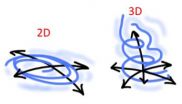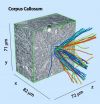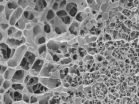(Press-News.org) Leading clinicians and health researchers from across Europe say much greater emphasis must be placed on the scientific evidence for the effectiveness of treatments and other healthcare interventions to ensure patients receive the best care available. The call is contained in a Science Policy Briefing published by the European Medical Research Councils, which also made ten key recommendations on how to improve the quality of research and healthcare in Europe.
The briefing, 'Implementation of Medical Research in Clinical Practice', says that there must be much greater awareness among health professionals of the benefits of health technology assessment (HTA). This is the systematic examination of the safety, effectiveness and cost-effectiveness of the application of a health technology – such as a drug, medical device or a clinical or surgical procedure. HTA must become a cornerstone of healthcare.
"It is imperative, morally, socially and economically, that healthcare received by patients in Europe is based on the best scientific evidence," said Professor Liselotte Højgaard, chair of EMRC. "It is unacceptable for patients to be given treatments which have not been adequately assessed, or to not be offered treatments that have been shown to be the most effective."
The report also argued that a much greater emphasis on systematic reviews of existing evidence for healthcare interventions is required. As such, the scientific evidence for a given treatment or technology must be thoroughly analysed andcomparative effectiveness studies must be carried out on new treatments. If a new drug comes on the market, for example, there must be good evidence that it is more effective and cost-effective than existing treatments before it can be approved for use in publicly funded healthcare services.
Where there are gaps or uncertainties in the current state of knowledge – whether a particular treatment is truly effective for example – then good quality research must be carried out to answer the question, and the results of such research must be made publicly available. All clinical studies must be rigorously and fully reported, regardless of whether they provide 'positive' or 'negative' results.
Professor Liselotte Højgaard commented:"Stakeholders must insist on implementing this recommendation as an ethical imperative. Over 50% of clinical studies are never published in full, and more than 30% of trial interventions are not sufficiently well described; there is too much biased under-reporting of studies that have disappointing results."
To achieve these aims it is vital that patients and the public are closely involved in all stages, from making decisions about research priorities to the design of research programmes and clinical trials and the dissemination of the research results.
The briefing also recommends that a European Institute for Health Research be established to provide a forum where issues of common interest in Europe in healthcare research and policy can be debated and appropriate strategies formulated.
###The Science Policy Briefing resulted from feedback from a wide network of world-class experts in this field and includes detailed case studies on a selected group of countries in Europe. For a copy of the report, please click on this link or contact esf@kaizo.co.uk.
Notes to editors
For more information, please contact
Emma Knott, Kaizo
+44 (0) 207 3176 4715
Emma.knott[at]kaizo.net
About ESF
The European Science Foundation (ESF) is an independent, non-governmental organisation that promotes collaboration in scientific research, funding of research and science policy across Europe. Its members are 79 national funding and research-performing organisations and learned societies from 30 countries. www.esf.org
About EMRC
The European Medical Research Councils (EMRC) is the European Science Foundation's membership organisation for all medical research councils in Europe. The mission of the EMRC is to promote innovative medical research and its clinical application towards improved human health. EMRC offers authoritative strategic advice for science policy making, research management, ethics, and better health services. In its activities, EMRC serves as a voice of its Member Organisations and the European scientific community. EMRC disseminates knowledge and promotes the socio-economic value of medical research to the general public and the decision makers. http://www.esf.org/nc/research-areas/medical-sciences.html
Leading European experts call for more rigorous scientific evidence for healthcare interventions
2012-10-23
ELSE PRESS RELEASES FROM THIS DATE:
Biologists record increasing amounts of plastic litter in the Arctic deep sea
2012-10-23
Biologists record increasing amounts of plastic litter in the Arctic deep sea: studies confirm that twice as much marine debris is lying on the seabed today compared to ten years ago
Bremerhaven, 22nd October 2012. The seabed in the Arctic deep sea is increasingly strewn with litter and plastic waste. As reported in the advance online publication of the scientific journal Marine Pollution Bulletin by Dr. Melanie Bergmann, biologist and deep-sea expert at the Alfred Wegener Institute for Polar and Marine Research in the Helmholtz Association. The quantities of waste observed ...
Next-generation vaccines -- eliminating the use of needles
2012-10-23
Lead scientist Professor Simon Cutting, from the School of Biological Sciences at Royal Holloway, has developed the jabs through the use of probiotic spores. He carried out fundamental studies into the biology of the bacterium Bacillus subtilis which attracted the attention of microbiologists due to its ability to form spores that can last millions of years before germinating under the appropriate environmental conditions.
Professor Cutting says: "The mechanisms by which this process occurs have fascinated microbiologists for decades making it one of the most intensively ...
Turbulent flows in 2D can be calculated in new model
2012-10-23
Turbulent flows have challenged researchers for centuries. It is impossible to predict chaotic weather more than a week in advance. Wind resistance on a plane or a car cannot be calculated precisely, since it is determined by atmospheric turbulence. Now, however, researchers from the Niels Bohr Institute have succeeded in developing a statistical model that can replicate the chaotic flows and thereby provide a better understanding of the process. The research results are published in the scientific journal, Physics of Fluids.
"Without knowing the movements in detail, we ...
Quantum computing with recycled particles
2012-10-23
A research team from the University of Bristol's Centre for Quantum Photonics (CQP) have brought the reality of a quantum computer one step closer by experimentally demonstrating a technique for significantly reducing the physical resources required for quantum factoring.
The team have shown how it is possible to recycle the particles inside a quantum computer, so that quantum factoring can be achieved with only one third of the particles originally required. The research is published in the latest issue of Nature Photonics.
Using photons as the particles, the Bristol ...
A circuit diagram of the mouse brain
2012-10-23
This press release is available in German.
What happens in the brain when we see, hear, think and remember? To be able to answer questions like this, neuroscientists need information about how the millions of neurons in the brain are connected to each other. Scientists at the Max Planck Institute for Medical Research in Heidelberg have taken a crucial step towards obtaining a complete circuit diagram of the brain of the mouse, a key model organism for the neurosciences. The research group working with Winfried Denk has developed a method for preparing the whole mouse ...
Lung mucus gel scaffold prevents nanoparticles from getting through
2012-10-23
Mucus coats our airways' internal surfaces. The viscous gel humidifies the lungs and prevents viruses and other small particles like diesel soot from entering the body unchecked. Previously unclear was the extent to which such nanoparticles are able to move through the lungs' mucus. Here, the research evidence was contradictory. Scientists could not explain why, in inhaled medication development, drug nanoparticles often simply got stuck in the mucus never making it to their target destination inside the lung cells.
Now, as part of a German Research Foundation (DFG)-funded ...
The complex association between moderate alcohol consumption and breast cancer
2012-10-23
An excellent review article from two scientists at the National Institute on Alcohol Abuse and Alcoholism in the USA to be published in Alcohol Clin Exp Res 2012, describes the epidemiologic and basic scientific evidence linking alcohol consumption to the risk of breast cancer.
The authors point out deficiencies in the epidemiologic data, especially that the pattern of drinking (regular moderate versus binge drinking) has generally not been taken into consideration, important given that binge drinking is associated with much higher blood alcohol concentrations and acetaldehyde ...
TIM and TAM: 2 paths used by the Dengue virus to penetrate cells
2012-10-23
By demonstrating that it is possible to inhibit the viral infection in vitro by blocking the bonding between the virus and these receptors, the researchers have opened the way to a new antiviral strategy. These works were published on line in the review "Cell Host & Microbe" of October 18, 2012.
The Dengue virus circulates in four different forms (four serotypes). It is transmitted to humans by mosquitoes. It is a major public health problem. Two billion people throughout the world are exposed to the risk of infection and 50 million cases of Dengue fever are recorded by ...
19 species of ferns named for Lady Gaga
2012-10-23
DURHAM, N.C. -- Pop music megastar Lady Gaga is being honored with the name of a new genus of ferns found in Central and South America, Mexico, Arizona and Texas. A genus is a group of closely related species; in this case, 19 species of ferns will carry the name Gaga.
At one stage of its life, the new genus Gaga has somewhat fluid definitions of gender and bears a striking resemblance to one of Gaga's famous costumes. Members of the new genus also bear a distinct DNA sequence spelling GAGA.
Two of the species in the Gaga genus are new to science: Gaga germanotta from ...
Moffitt researchers study how patterns, timing of sunlight exposure contribute to skin cancers
2012-10-23
Researchers at Moffitt Cancer Center, the University of South Florida and the International Agency for Research on Cancer in France have studied the patterns and timing of sunlight exposure and how each is related to two nonmelanoma skin cancers – basal cell carcinoma and squamous cell carcinoma.
This study, published in the open-access journal BioMed Central, is the first case-control study to simultaneously evaluate identical patterns and timing of sunlight exposure as they are related to basal cell and squamous cell carcinomas in the same U.S. population with high ...


